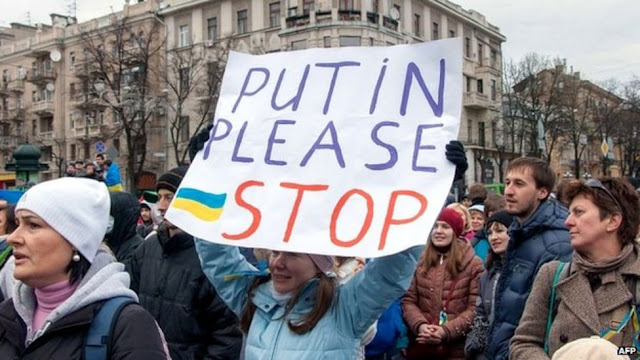- Background and Annexation of Crimea: In late 2013 and early 2014, Ukrainians protested against then-President Viktor Yanukovych's decision to reject closer ties with the European Union in favor of a closer alliance with Russia. The demonstrations, known as the Euromaidan protests, eventually resulted in Yanukovych's ousting in February 2014. Following his removal, Russia denounced the new Ukrainian government and began military actions in Crimea, a region with a significant Russian-speaking population.
In March 2014, Russia annexed Crimea, a move that was widely condemned by the international community as a violation of Ukraine's sovereignty and territorial integrity. The annexation sparked further tensions between Russia and Ukraine.
- Conflict in Eastern Ukraine: Following the annexation of Crimea, pro-Russian separatist movements emerged in eastern regions of Ukraine, primarily Donetsk and Luhansk. These separatists declared independence from Ukraine, leading to a conflict between the Ukrainian government and separatist forces, supported by Russia.
The Ukrainian government launched military operations to regain control over the separatist-held areas. However, the conflict escalated as Russia allegedly provided military support, including weapons, troops, and equipment, to the separatists. The conflict turned into a full-scale war, resulting in thousands of deaths and displacements.
Minsk Agreements and Ceasefire Attempts: Multiple attempts at ceasefires and diplomatic negotiations have been made to de-escalate the conflict. The most notable ceasefire agreements are the Minsk Protocol (September 2014) and the Minsk II Agreement (February 2015). These agreements were brokered by the leaders of Ukraine, Russia, France, and Germany. However, the implementation of the agreements has been challenging, with frequent violations and limited progress toward a lasting resolution.
Humanitarian Crisis and Displacement: The conflict has caused a severe humanitarian crisis, with numerous civilian casualties and significant displacement of people. It is estimated that thousands have been killed and millions have been displaced within Ukraine or sought refuge in neighbouring countries.
International Response: The international community has been actively involved in attempting to resolve the conflict. Economic sanctions have been imposed on Russia by the United States, the European Union, and other countries as a response to its actions in Ukraine. Various diplomatic efforts, including negotiations and peace talks, have been conducted with the aim of achieving a peaceful resolution. However, a lasting solution remains elusive.
The conflict between Russia and Ukraine continues to impact the region, and efforts to reach a comprehensive resolution are ongoing. It is a highly complex and politically sensitive situation with significant humanitarian, geopolitical, and security implications for Ukraine, Russia, and the broader international community. Russia has been waging war inside Ukraine and using tactics that are against International Law. Russia has been systematically striking civilian targets and committing war crimes. The international court will charge Putin and his armies with war crimes after the war in Ukraine is over.
Source: Some or all of the content was generated using an AI language model


No comments:
Post a Comment